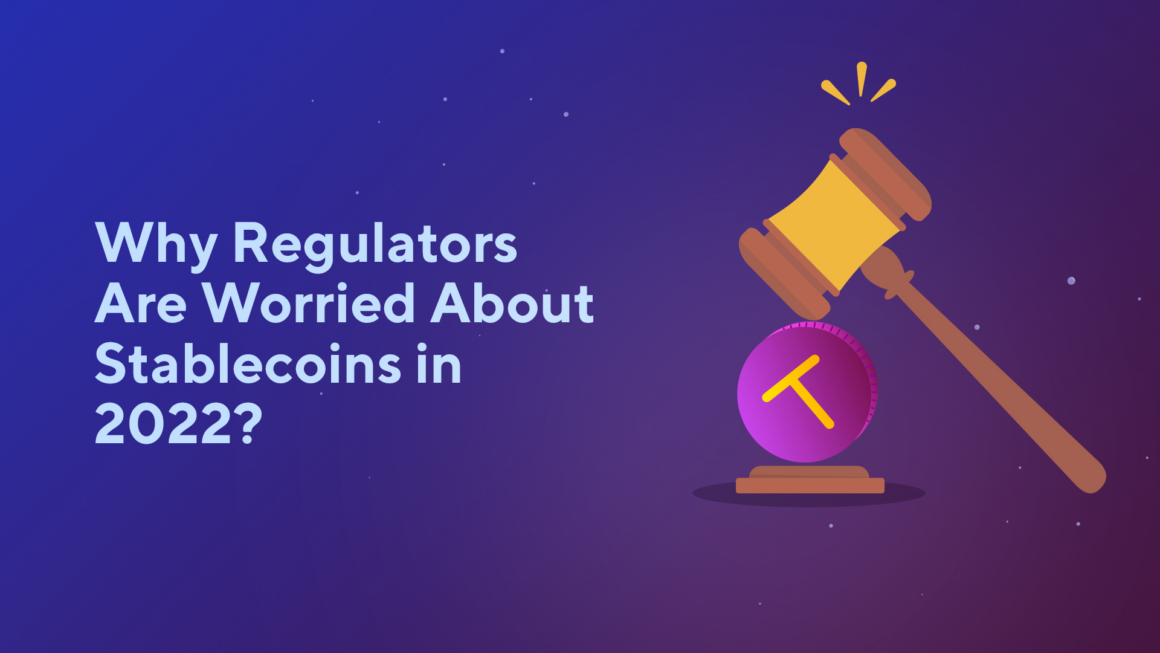The cryptocurrency market has been experiencing the strongest drop in recent years. Bitcoin and Ether have fallen by 70-80% in six months, and the market is predicting a multi-year winter. Moreover, regulators are getting increasingly worried about stablecoins after the collapse of the controversial cryptocurrency venture Terra. What is happening? Why regulators are worried about stablecoins? Let’s try to find out!
What Are Stablecoins: Key Things to Know
What are stablecoins? Stablecoins are cryptocurrencies whose value is pegged to a particular fiat currency (that is, regular currency — the dollar or euro) or a physical asset (for example, gold). So, what are stablecoins? In theory, a stablecoin can be bought or sold at a fixed price at any time. When a coin is exchanged for fiat money, a stablecoin, as a rule, is burned and goes out of circulation.
Since all cryptocurrencies today are characterized by high volatility, according to the idea of the creators, a stablecoin pegged to a stable fiat currency should itself be stable, unlike other crypto coins. Thus, the coin has all the qualities of a cryptocurrency, but, unlike Bitcoin or Ether, it is not subject to volatility, that is, sharp price fluctuations.
Thus, stablecoins are trying to combine the best of cryptocurrencies and fiat money: decentralization, anonymity, and stability.
Volatility is a major problem for those who view cryptocurrencies as a currency rather than an investment. Over the past year, the price of bitcoin has fallen below $50,000 and has risen above $60,000 more than five times, according to data from CoinMarketCap.
Katie Stockton, founder, and managing partner of Fairlead Strategies, a research firm focused on technical analysis, said that due to constant price falling:
One should categorize Bitcoin and altcoins as risk assets rather than safe havens.
How Safe Are Stablecoins?
2021 was distinguished not only by the peak of the cryptocurrency market but also by the great attention of regulators to it. That only is the ban on cryptocurrencies in China. Other regulators of large markets, such as the US and the EU, have often criticized the cryptocurrency market due to its instability and vulnerability. And not without reason.
How safe are stablecoins? Well, at the beginning of May, the stable world of stablecoins faced the biggest crash in its short history. Last month, the owners of the algorithmic stablecoin TerraUSD and the Terra Classic crypto lost their money in one day. This significantly hit the credibility of cryptocurrencies.
The value of TerraUSD stablecoin is $0.03433 today, although it should always be around $1. The price of the Terra Classic cryptocurrency, which was $80 before the crash, has now fallen to $0.0001004.

The fund behind these projects, the Luna Foundation Guard, spent almost all of its holdings to defend the token’s peg to the dollar, but this did not work. This month, the US Securities and Exchange Commission launched an investigation into these events to determine if the platform violated its investor protection rules.
Therefore, for example, even slight fluctuations in the price of another popular stablecoin USDD, cause significant concern. Cryptocurrency usually did not deviate from $1 even by a cent. Still, the USDD value fell to $0.92. That’s why regulators are worried about stablecoins.
According to the USDD founders, they are correcting the situation and assuring the project’s safety. However, the panic among investors is very harmful to such projects and the crypto industry as a whole.
So, how safe are stablecoins? Well, one of the main risks of stablecoins is operational once since any commercial company can become an issuer of tokens. Right now, the two largest stablecoin issuers, Tether and Circle, are taking a different approach to peg their tokens. Circle has a clear list of investors (for example, among them, there are the largest management companies, BlackRock and Fidelity) and is trying to obtain a banking license. At the same time, about 60% of Tether’s collateral is corporate bonds, and market participants are wondering which securities they are talking about.
In August last year, the issuer-consortium (which includes Circle and Coinbase) of the USDC currency admitted that the stablecoin was only 61% backed by risk-free assets for ‘more than a year.’
What Are the Best Stablecoins?
Popular stablecoins are a liquid asset: there are a lot of them on almost any platform.
Also, popular stablecoins are a universal unit of exchange and storage of capital among crypto investors and traders. They are easier to trade in pairs with other cryptocurrencies than with fiat currencies. Unlike fiat, stablecoins are faster and easier to transfer between accounts and addresses.
In addition, stablecoins protect against volatility in a cryptocurrency portfolio and are actively used in DeFi applications.
There are hundreds of stablecoins on the cryptocurrency market. Still, what are the best stablecoins? Here is a list of the top 10 stablecoins based on market cap:
-
- Tether (USDT)
-
- USD Coin (USDC)
-
- Binance USD (BUSD)
-
- TerraUSD (UST)
-
- Dai (DAI)
-
- TrueUSD (TUSD)
-
- Pax Dollar (USDP)
-
- Fei USD (FEI)
-
- USDD (USDD)
-
- Magic Internet Money (MIM)
What are the best stablecoins? Feel free to share your thoughts in the comments below!

Leave a Reply